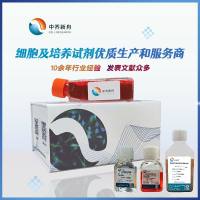Pathogen and Biological Contamination Management in Plant Tissue Culture: Phytopathogens, Vitro Pathogens, and Vitro Pests
互联网
544
The ability to establish and grow plant cell, organ, and tissue cultures has been widely exploited for basic and applied research, and for the commercial production of plants (micro-propagation). Regardless of whether the application is for research or commerce, it is essential that the cultures be established in vitro free of biological contamination and be maintained as aseptic cultures during manipulation, growth, and storage. The risks from microbial contamination are spurious experimental results due to the effects of latent contaminants or losses of valuable experimental or commercial cultures. Much of the emphasis in culture contamination management historically focussed on the elimination of phytopathogens and the maintenance of cultures free from laboratory contamination by environmental bacteria, fungi (collectively referred to as “vitro pathogens”, i.e. pathogens or environmental micro-organisms which cause culture losses), and micro-arthropods (“vitro pests”). Microbial contamination of plant tissue cultures is due to the high nutrient availability in the almost universally used Murashige and Skoog (Physiol Plant 15:473–497, 1962) basal medium or variants of it. In recent years, it has been shown that many plants, especially perennials, are at least locally endophytically colonized intercellularly by bacteria. The latter, and intracellular pathogenic bacteria and viruses/viroids, may pass latently into culture and be spread horizontally and vertically in cultures. Growth of some potentially cultivable endophytes may be suppressed by the high salt and sugar content of the Murashige and Skoog basal medium and suboptimal temperatures for their growth in plant tissue growth rooms. The management of contamination in tissue culture involves three stages: disease screening (syn. disease indexing) of the stock plants with disease and endophyte elimination where detected; establishment and pathogen and contaminant screening of established initial cultures; observation, random sampling, and culture screening for micro-organism in multiplication and stored cultures. The increasing accessibility of both broad-spectrum and specific molecular diagnostics has resulted in advances in multiple pathogen and latent contaminant detection. The hazard analysis critical control point management strategy for tissue culture laboratories is underpinned by staff training in aseptic technique and good laboratory practice.









